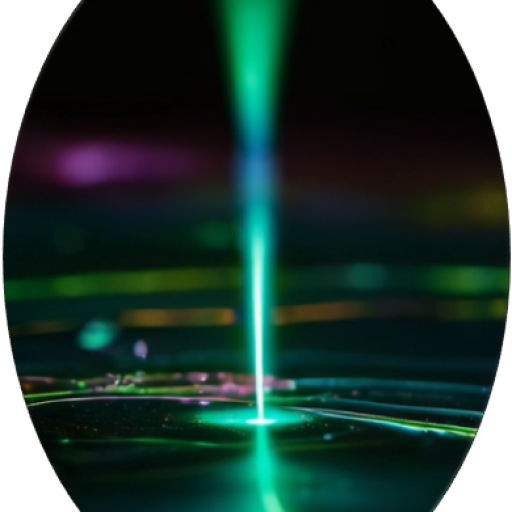High-Precision Sensing Devices
Direct-write techniques enable the fabrication of high-performance nanosensors thanks to the material variability and the partly unique material properties of FEBID / FIBID materials by means of nanogranular metal-matrix composition. The ability to deposit or modify materials with sub-50 nm accuracy allows for the creation of site-specific, multi-functional sensor architectures on virtually any given surface. Examples include:
- Gas Sensors: FEBID nanostructures optimized for selective, reversible and quantitative gas detection.
- Magnetic Sensors: Miniaturized devices with integrated nanomagnets for magnetic field detection.
- Mechanical Sensors: Nanobridges and planar nanogranular stress-strain sensors for detecting minute forces or mechanical changes.
- Superconducting Sensors: Direct-write techniques enable the fabrication of Josephson junctions and nanoSQUIDs that can be employed to detect small magnetic fields with high lateral resolution.
A prominent example of mechanical sensing involves FEBID-fabricated stress-strain sensors for electric readout on AFM cantilevers (upper graphic). Platinum-based FEBID nanogranular structures were precisely engineered to enable the detection of mechanical forces at unprecedented sensitivity levels. This approach leverages FEBID’s precise control over geometry and material properties to create robust, reliable sensing platforms capable of operating in demanding environments. Additionally, Pt-based FEBID nanowires have been used for gas sensing (lower graphic), where nanometer control over structure geometry results in improved sensitivity and response time. Post-growth purification further enables precise performance material tuning, while hybrid integration enables multi-signal detection capabilities.
These sensors offer enhanced functionality for environmental monitoring, biomedical diagnostics, and industrial applications, where precision and reliability at the nanoscale are critical.
Literature
Living up to its Potential – Direct-Write Nanofabrication with Focused Electron Beams; M. Huth, F. Porrati, S. Barth; J. Appl. Phys. (2021), 130, 170901.
Magnetoelectrical Transport Improvements of Postgrowth Annealed Iron–Cobalt Nanocomposites: A Possible Route for Future Room-Temperature Spintronics; M.V. Puydinger dos Santos et al.; ACS Appl. Nano Mater. (2018), 1, 7, 3364.
A Tunable Strain Sensor Using Nanogranular Metals; C.H. Schwalb et al.; Sensors (2010), 10(11), 9847.
Variable Tunneling Barriers in FEBID Based PtC Metal-Matrix Nanocomposites as a Transducing Element for Humidity Sensing; F. Kolb et al.; Nanotechnology (2013), 24, 305501.
One-Dimensional Nanomaterials in Resistive Gas Sensor: From Material Design to Application; Z. Wang et al.; Chemosensors (2021), 9(8), 198.
Mass Sensing for the Advanced Fabrication of Nanomechanical Resonators; G. Gruber et al.; Nano Lett. (2019), 19, 10, 6987.
